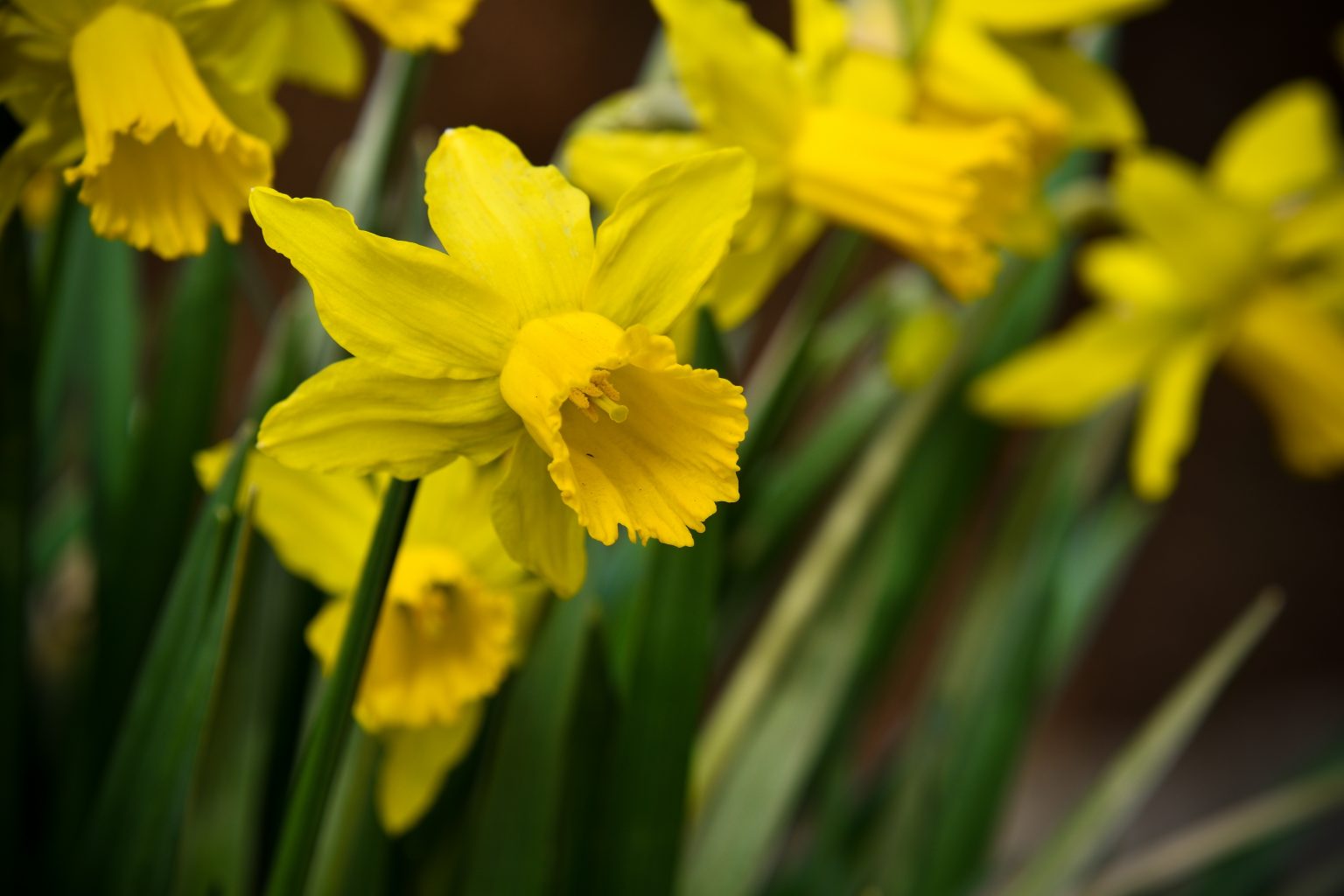
The ancestors of the daffodil are generally believed to have originated in southern Europe and North Africa. Even with a report of daffodil remnants being found in an ancient Egyptian tomb, their origin story is not totally understood.
Daffodils name is actually Narcissus, a genus of mostly spring-flowering perennials of the amaryllis family, Amaryllidaceae. If “Narcissus” sounds familiar, it is probably because it is also the name of the beautiful youth from Greek mythology who was tricked into falling in love with his own reflection. The drooping flower heads, which are characteristic of most daffodils, are said to memorialize the posture of Narcissus as he bent over to see his own image in a pool of water. The word Narcissus itself stems from the ancient Greek term narke which means “numb”, probably referring to elements within the plant which have a slightly numbing effect.
The name “daffodil” also has an interesting origin, although also not verifiable. The speculation is “daffodil” came from the Greek word asphodel, with a “d” added at some point in history. Asphodel is the name of another truly beautiful plant which is said to have grown in the Elysian Fields (the blessed fields of the afterlife in ancient Greek literature).
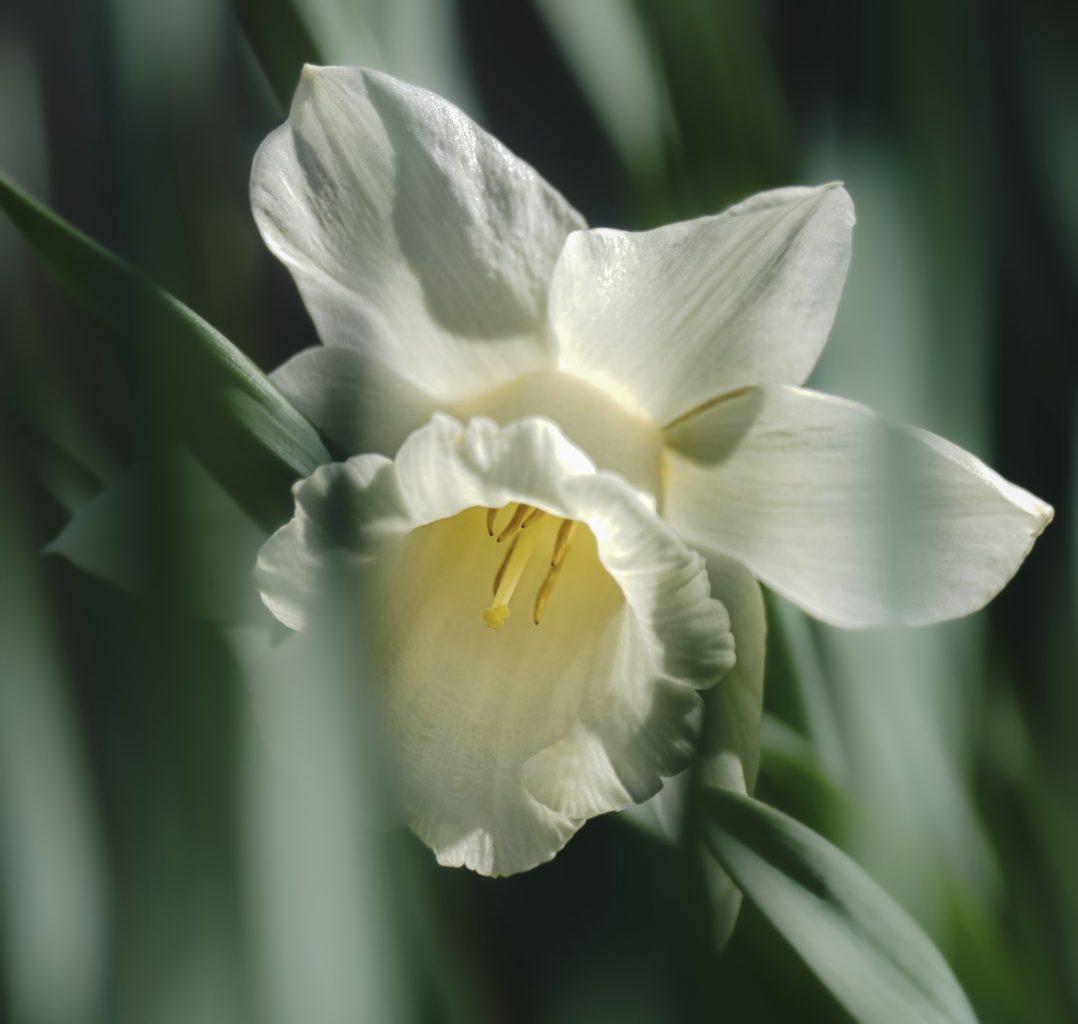
The symbolism of flower language defines daffodils as a symbol of hope, new birth and new beginnings – especially as they produce their vibrant colors in the springtime landscape. In Victorian times they were linked to self esteem and at other times “unequalled love”.
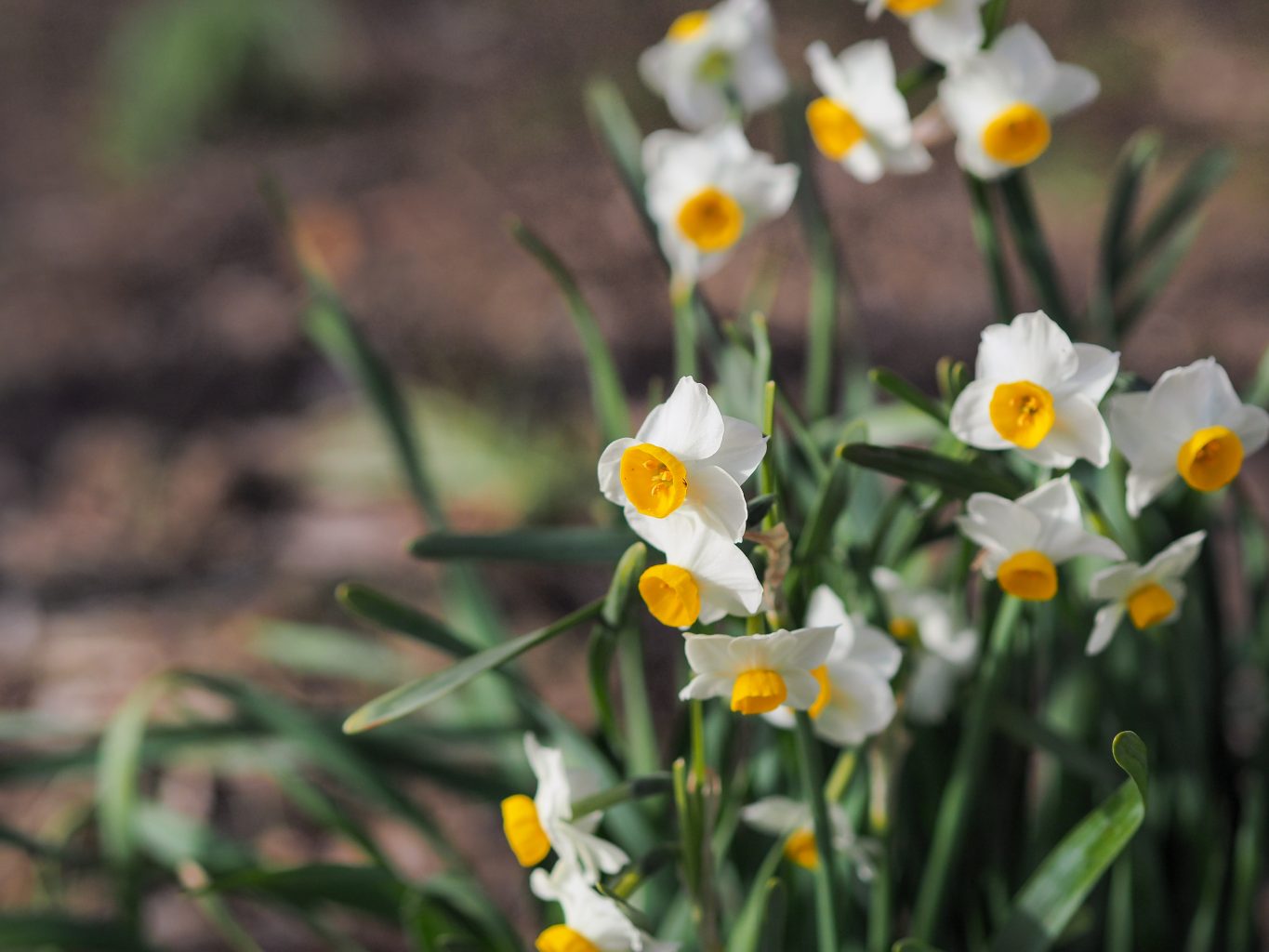
The Narcissus tazetta (a white-flowered daffodil with a yellow trumpet pictured above) is said to have travelled by camel caravan over the Silk Road to China in the 10th century, sometime before the beginning of the Song Dynasty. Another theory has them transported by ancient sea-trade routes by Persian or Arab traders. Chinese workers brought these daffodils to North America during the California gold rush (1848-1856) where it is still found, naturalized into the landscapes around the gold mining areas.
This daffodil became a sacred plant within China, sometimes referred to as the “Good Luck Flower” because they saw the golden-yellow central crown as symbolizing prosperity. Daffodils naturally bloom around the time of the Chinese New Year, but their bulbs require close tending in order to time the flowering date. It was said that a blossoming on the Chinese New Year would bring extra wealth and good fortune during the year, requiring skill in timing and luck because the date of the New Year varies in the lunar calendar.
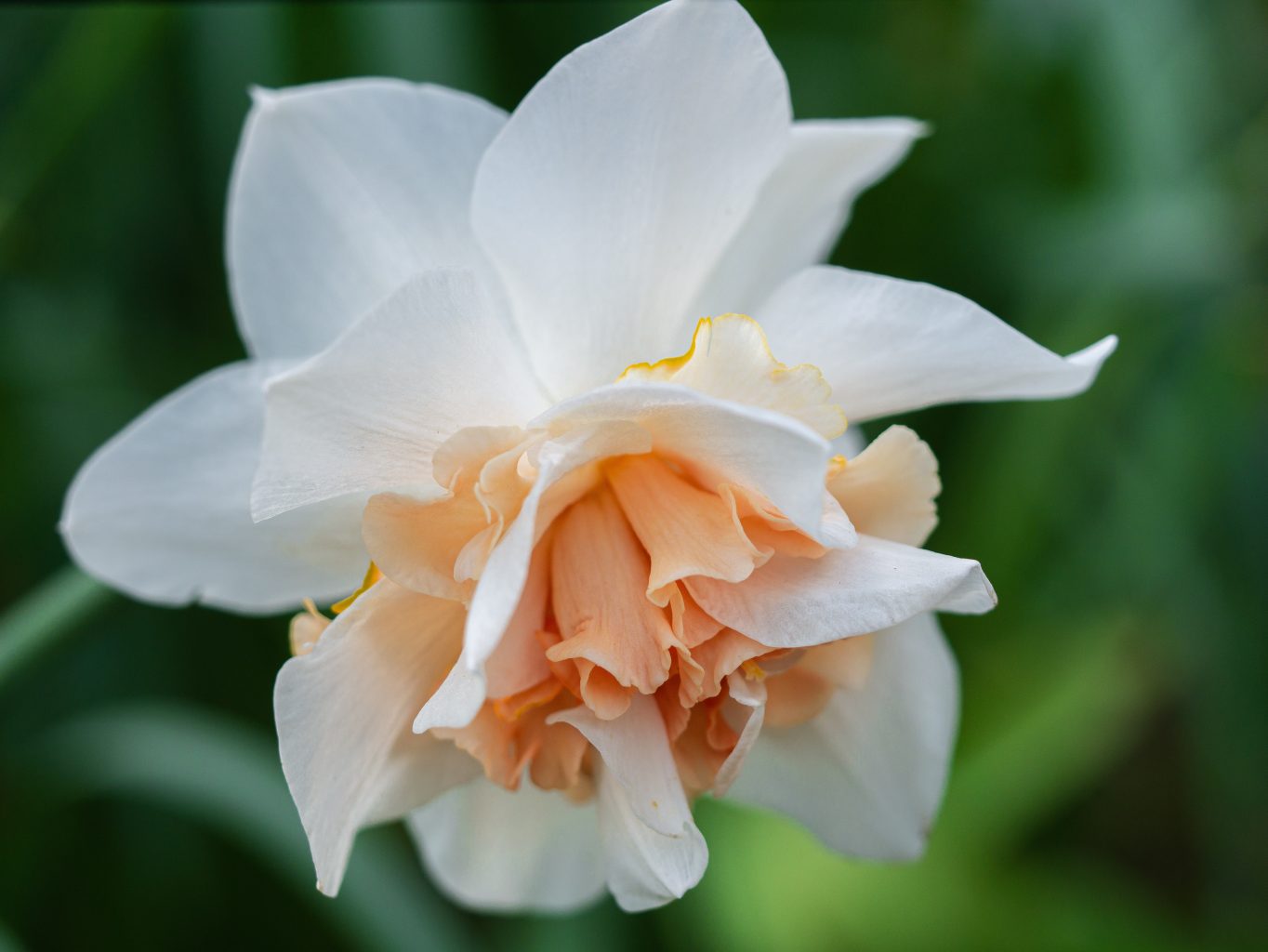
Daffodils are easy to recognize because they are one of the few flowers with a trumpet-like or cup-shaped structure called a “corona”. While previously believed to be an extension of the petals, new research identifies the corona as a distinct organ of the flower which works with the stamens (the pollen-producing reproductive organs). There are now over 25,000 varieties of daffodils resulting in variations such as the gorgeous ruffled, split- or collar-type coronas.
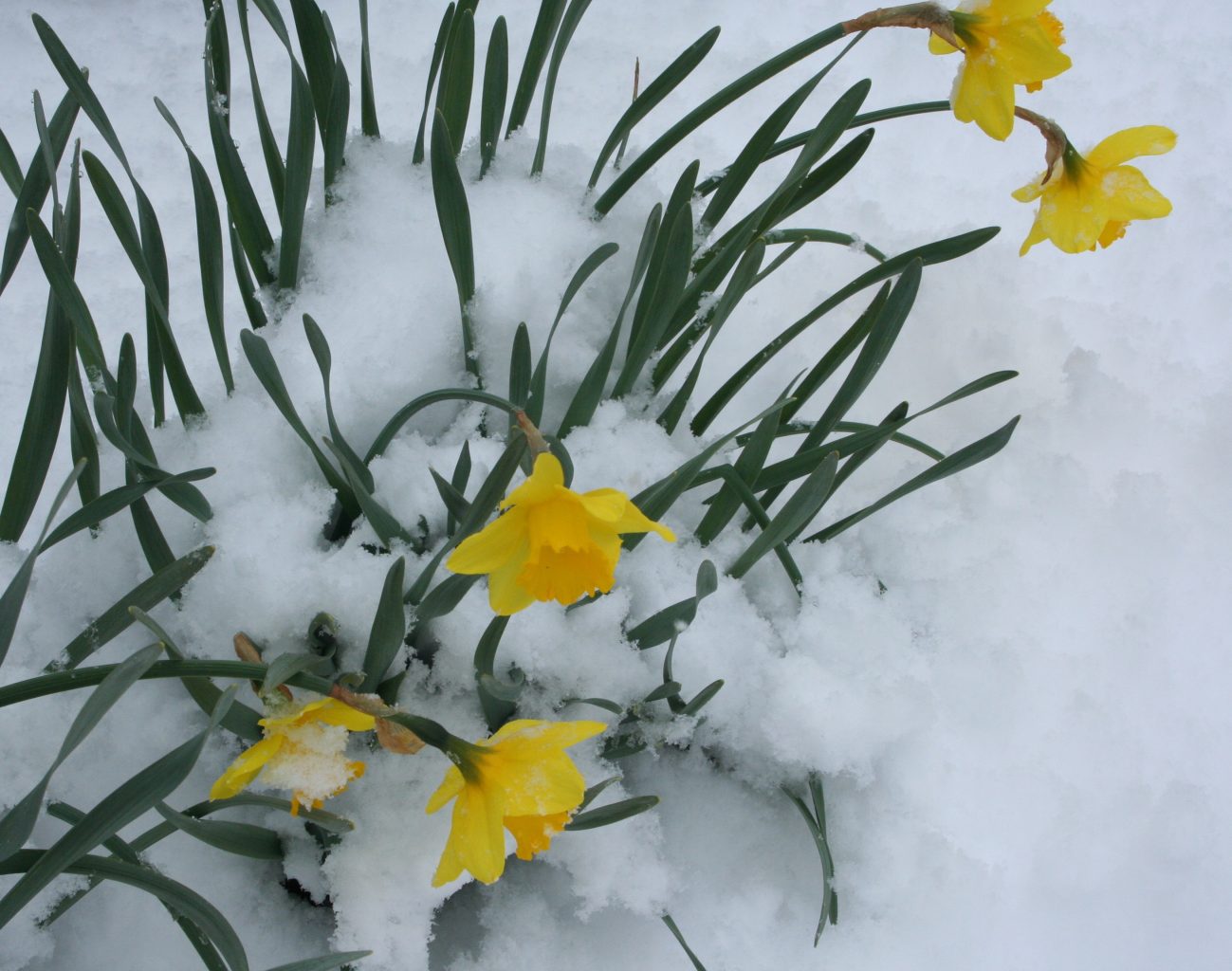
Daffodils’ early spring arrival, with their stunningly beautiful bright colors, seems to align with an active, yang type energy. It is not unusual to see them erupt out into a snowy landscape. A daffodil bulb sprouts a single hollow stem from which the flower emerges, usually in yellows and whites, but also oranges and pinks in intense and pastel shades. It is worth taking a moment to ponder or contemplate the miracle of strength and vibrancy of this springtime blossoming.
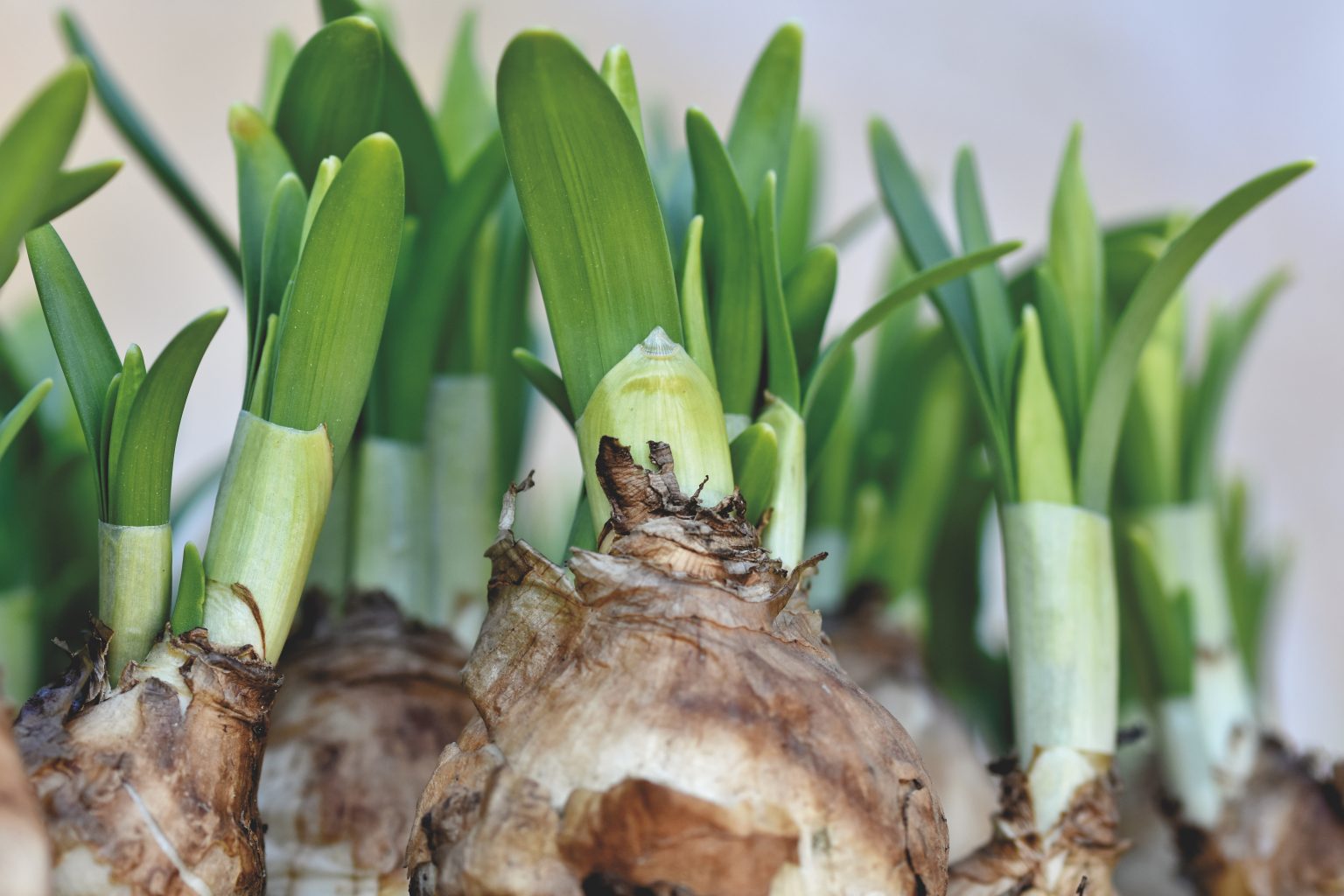
All that precedes the miraculous yang-type springtime appearance is also worth some time in meditation as the daffodil displays an intensely yin aspect. As mentioned, at the base of a daffodil is the bulb whose roots extend into the ground. In order to reproduce, the bulb divides and clones itself, but it takes about 3 – 5 years for this to happen. Sometimes little bulbs form along the stem too, which can be peeled off and replanted.
Moreover, daffodils also grow from seed, provided proper pollination has taken place (usually by bees). The seeds develop when the flower has died. These tiny black seeds are held in the pod until it dries and readies itself to burst, dispersing them. Once scattered by the wind, birds or animals, if the seeds manage to sprout and begin to grow, it may take from 5 or up to 7 years before the first bloom arrives.
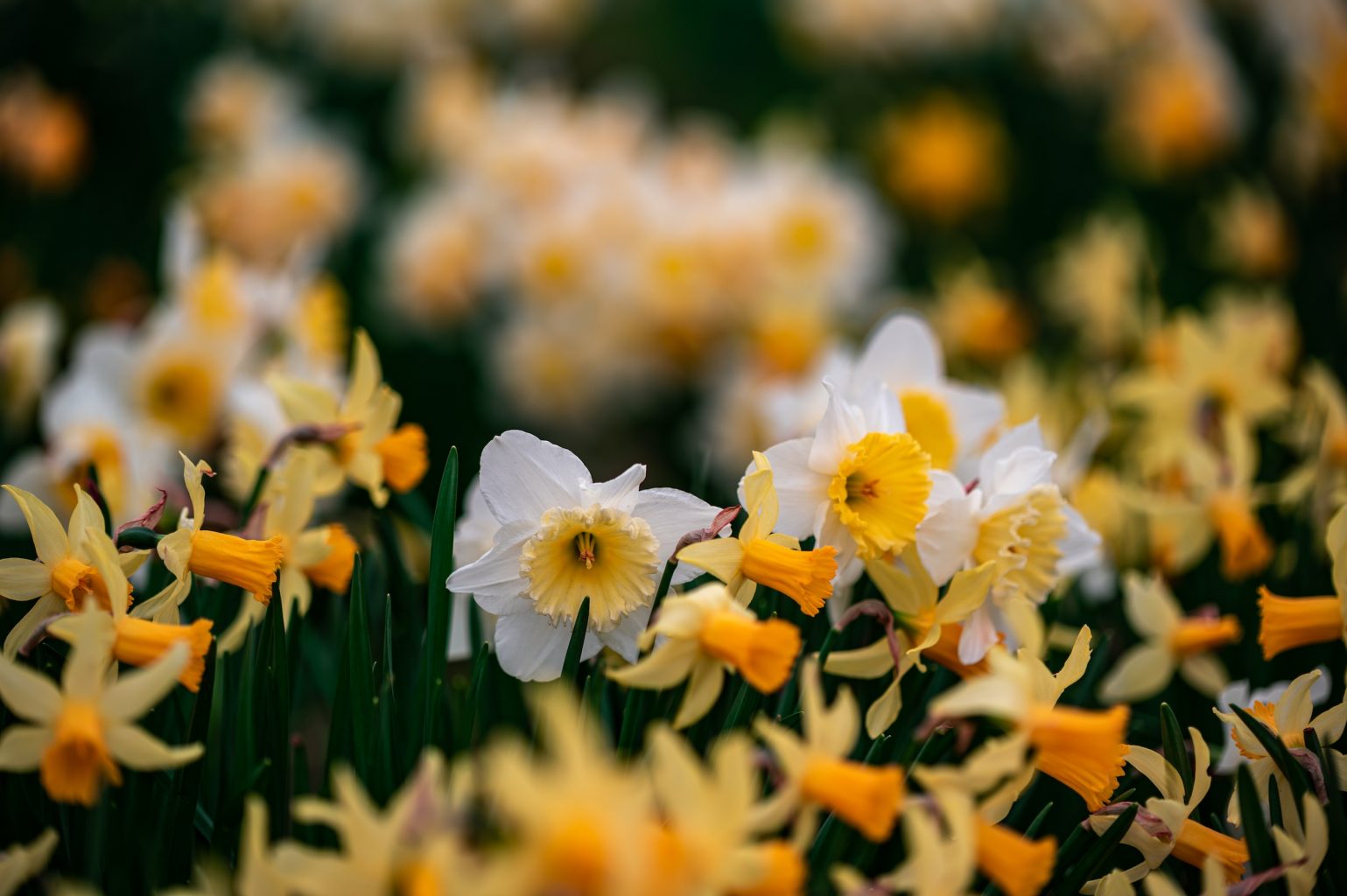
Daffodils have a long history within many cultures as a staple of traditional medicine but even deer, squirrels and gophers give them wide birth. Their bulbs and leaves contain poisonous components, such as lycorine which only certain insects can safely ingest. So, besides not eating them, it is recommended that, if you plan to have them as part of a bouquet of cut flowers in a vase, soak them separately in water for 24 hours before adding them to the other flowers.
On the other hand, daffodils have a variety of compounds which have antimicrobial, anti-inflammatory and antioxidant properties. Currently, medical researchers are finding certain chemicals within daffodils may be effective in treating Alzheimer’s disease and cancer. Early evidence in another area shows that daffodils produce an extract which, when fed to cattle, significantly reduce methane emissions.
Daffodils are fascinating and complex. In researching them, we’ve found they appear to represent both ends of a duality within one plant, like a living example of the classic “yin/yang” symbol.
